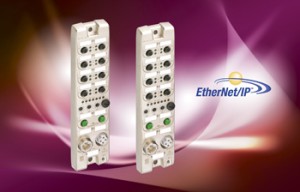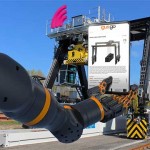Automatic tool change is now faster on robots
 Belden says the Quick Connect feature on its Lumberg Automation I/O Network-Ruggedized (LioN-R) EtherNet/IP modules ensures that the LioN-R series can quickly and efficiently power up and join an EtherNet/IP network after an automatic tool change on a robot has been performed. This reduces the time it takes for the automatic tool change systems found on modern robots to exchange tools and switch out the task the robot performs.
Belden says the Quick Connect feature on its Lumberg Automation I/O Network-Ruggedized (LioN-R) EtherNet/IP modules ensures that the LioN-R series can quickly and efficiently power up and join an EtherNet/IP network after an automatic tool change on a robot has been performed. This reduces the time it takes for the automatic tool change systems found on modern robots to exchange tools and switch out the task the robot performs.
Often, powering up for operation after an automatic tool change can take machines five to eight seconds. Toni Hauert, product manager at Belden, says: “Now, with the Quick Connect technology, a robot can return to work after an automatic tool change in less than 500 milliseconds, allowing for a faster production cycle, quicker automatic tool change operations and more flexibility in the production process.”
Minimised automatic tool change time allow industrial markets – such as automotive manufacturers and logistic companies – to adjust robots to serve multiple purposes. This reduces the number of robots needed, minimizing maintenance requirements and production cycle downtime. “An automotive manufacturer, for example, could produce more cars overall, and more varying types of cars, on the same production line with the speed and efficiency the Quick Connect feature brings to robotic automation,” adds Hauert.
Other features of the LioN-R EtherNet/IP include an IP67 degree of protection, M12 connection for the network, integrated dual-port switch to facilitate line and ring topologies, three modules providing flexibility, ‘fail safe’ function, and an operating temperature range of -10˚C to +60˚C.
Visit the Belden website for more information on technology for automatic tool change systems.
See all stories for Belden















